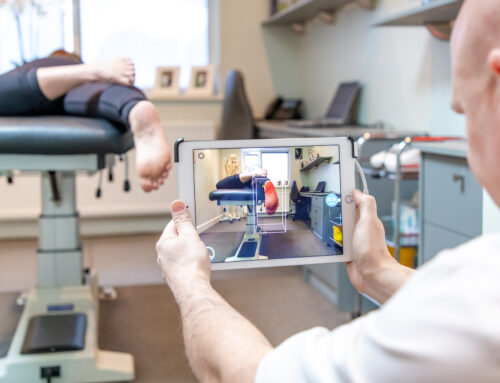Understanding Osteopathy
- Holistic Approach
Osteopathy is a form of manual therapy that takes a holistic approach to healthcare. It views the body as a dynamic, interconnected system, emphasising the role of the musculoskeletal structure in overall well-being. - Principles of Osteopathy
Osteopathy is guided by principles such as the body’s self-healing capacity, the importance of the musculoskeletal system, and the interconnectedness of structure and function. Practitioners focus on treating the root cause rather than just the symptoms.
The Role of Osteopathic Practitioners
- Hands-On Treatment
Osteopathic practitioners use a hands-on approach to diagnose, treat, and prevent a wide range of health issues. Techniques may include joint mobilisation, soft tissue manipulation, and muscle energy techniques. - Individualised Care
One of the hallmarks of osteopathy is its individualised treatment plans. Practitioners consider each patient’s unique medical history, lifestyle, and goals to tailor a plan that addresses their specific needs.
Conditions Treated by Osteopathy
- Musculoskeletal Pain
Osteopathy is particularly effective in addressing musculoskeletal pain, including back pain, neck pain, and joint discomfort. By restoring balance and function, patients often experience relief from chronic pain. - Postural Issues
Osteopathic interventions can help correct postural imbalances, promoting better alignment and reducing the risk of injuries related to poor posture. - Stress and Tension
Beyond physical ailments, osteopathy recognises the impact of stress on the body. Techniques employed by osteopathic practitioners can help release tension and promote relaxation.
Osteopathy and Complementary Medicine
- Integration with Conventional Medicine
Osteopathy complements conventional medical practices, often working in tandem with other healthcare disciplines to provide a more comprehensive approach to patient care. - Preventive Care
Osteopathy extends beyond treating existing issues; it also plays a role in preventive care by addressing imbalances and potential sources of discomfort before they escalate.
Conclusion
In the realm of alternative healthcare, osteopathy stands as a beacon of hope for those seeking a more holistic and patient-centric approach to healing. By recognising the intricate relationship between the body’s structure and function, osteopathy empowers individuals to embark on a journey towards optimal health.
Consider incorporating osteopathy into your wellness routine, and embrace the transformative power of this hands-on therapy. Your body has an innate ability to heal, and osteopathy is here to nurture that inherent potential.




